Quartier des bijoux de Jongno 3(sam)-ga (종로3가 귀금속 전문상가)
664.7M 2025-10-23
Jongno 3(sam)-ga, Jongno-gu, Seoul-si
+82-2-1330
Avec ses nombreuses bijouteries grossistes et détaillantes, ce quartier offre des bijoux de divers designs à un prix très intéressant. Il y a autant de styles que de boutiques, ce qui rend ce quartier populaire surtout pour les futurs mariés et les touristes étrangers. Le grand avantage est que l’on peut y bénéficier d’une réduction de 30 à 40% par rapport aux prix courants.
Divers bijoux à prix de gros
Le quartier des bijoux de Jongno englobe en général les environs de Jongno 3(sam)-ga, allant de Jongno 1(il)-ga jusqu’à Jongno 5(o)-ga en passant par le cinéma « Danseongsa ». Le nombre des magasins installés dans ce quartier s’élève à plus de mille, et celui des ateliers de fabrication dépasse 300. Il y a également une vingtaine de centre d’évaluation aux alentours.
Le premier quartier des bijoux est né dans le quartier « Yeji-dong », puis il s’est étendu jusqu’au quartier « Bongik-dong » près du cinéma « Danseong-sa ». A mesure que le quartier s’agrandissait, de plus en plus de bijouteries s’installaient autour du boulevard principal qui mène de Jonggak jusqu’à Jongno 5(o)-ga. Pourtant, chaque quartier garde toujours son identité.
Connu pour les montres décorées principalement de pierres brutes, « Yeji-dong » est appelé « quartier des montres ». Avec « Yeji-dong », « Bongik-dong » est aussi un quartier où sont rassemblés bien des grossistes. On y trouve de nombreuses bijouteries spécialisées en or pur ou en collier chaîne . Elles sont fréquentées par les intermédiaires et les grossistes venant des quatre coins de la Corée du Sud. Il est possible qu’un particulier y fasse ses achats, mais certains magasins grossistes ne le souhaitent pas. En revanche, les boutiques tenues par les détaillants installés le long du boulevard sont ouvertes aux particuliers. Dotés d’un aménagement intérieur moderne, ces nouveaux magasins présentent divers étalages. De plus, situés le long du grand boulevard, ils sont faciles à trouver. Les prix sont raisonnables et ils s’approchent de ceux des grossistes.
Les boutiques de ce quartier offrent divers produits et prix. Grâce à nombre de centres d’évaluations situés aux alentours, vous pouvez faire vos achats en toute confiance. Les magasins tiennent aussi des ateliers de fabrications communs. Si vous leur apportez une photo ou une brochure de votre modèle désiré, ces bijoutiers pourront vous faire le même style. Vous pourrez également bénéficier des services après-vente. Ici, il est possible d’acheter avec une réduction de 30 à 40% comparé avec d’autres quartiers, et ce pour de l’or ou du diamant à un prix de gros ; pour les montres, la réduction peut atteindre 50 ou 60%. Selon les articles, vous pourrez aussi acheter des bijoux pour la cérémonie de mariage. Cependant, les prix varient selon les vendeurs, il est donc conseillé de choisir l’article souhaité et de comparer les prix proposés en faisant un tour dans les boutiques avant de faire vos achats.
La réputation de ce quartier est aussi due au design de ses bijoux. Dès que sortent les nouvelles brochures des marques de luxe étrangères telles que « Cartier », « Tiffany », « Bulgary », le lendemain apparaissent les mêmes designs dans les boutiques. Depuis ces derniers temps, ce quartier est devenu célèbre aussi grâce aux accessoires portés par les vedettes coréennes Une bonne partie des accessoires qui ont été portés par elles et qui sont devenus à la mode sont nés de la coopération des commerçants du quartier avec les habilleuses lors de la conception de feuilletons télévisés. C’est la raison pour laquelle ce quartier est baptisé « Mecque des bijoux » portés par les vedettes. Les designs qui ont eu un grand succès sont, par exemple : les boucles d’oreilles de Lee Seung-Yeon et de Lee Yeong-Ae, les médailles de Jeon Ji-Hyeon et de Mun Hui-Jun. etc..
Tout cela attire les touristes étrangers, notamment les Japonais. Comparés au Japon, les prix sont beaucoup moins élevés, l’or et divers bijoux sont très appréciés par eux. Situé en plein coeur de Séoul, dans le quartier Jongno, ce quartier des bijoux est très facile d’accès, ce qui favorise les achats efficaces.
Centre d'information du Temple Stay (템플스테이 홍보관)
719.4M 2022-09-28
56, Ujeongguk-ro, Jongno-gu, Seoul
+82-2-2031-2000
Le centre d’information du Temple Stay est situé en face du temple Jogyesa. Il est très facile de s’y rendre depuis la station Anguk (métro de Séoul ligne 3) ou depuis la rue principale du quartier Insa-dong. Il s’agit d’un complexe culturel sur 5 niveaux qui inclut les bureaux de l’organisation officielle Templestay, un centre d’information, le restaurant de nourriture du temple “Balwoo Gongyang”, le « Lotus Café » et une librairie bouddhiste au rez de chaussée.
Le centre d’information du Temple Stay au rez de chaussée vous donne toutes les informations sur les programmes Temple Stay. Il est possible d’y choisir des brochures et livrets sur les programmes et des employés pourront répondre à vos questions. Le centre d’éducation au 2ème étage propose des activités. Le 4ème étage inclut le restaurant “Balwoo Gongyang”, spécialisé dans la cuisine du temple, et où il est possible de déguster des plats minutieusement préparés par des bouddhistes pratiquants.
Maison traditionnelle Baek in-je 백인제가옥
732.6M 2024-10-25
Seoul, Jongno-gu, Bukchon-ro 7gil 16
+82-2-724-0200
La demeure traditionnelle Baek In-je, située à Bukchon (quartier Gahoe-dong), est une maison hanok construite dans le style occidentale et qui est restée dans son état originel. Il s'agit d'une demeure typique de l'époque impérialiste du Japon en Corée. Construite autour d'un pavillon principal, cette demeure comprend différents petits pavillons annexes ainsi que plusieurs jardins. Cette demeure met parfaitement en valeur la beauté des maisons traditionnelles 'hanok' en Corée tout en dévoilant une façette moderne de ce type d'habitat. Il s'agit d'une structure représentative du village Bukchon avec la demeure traditionnelle Yun Bo-seon.
Cette demeure (1907), qui utilise pour sa structure des pins noirs du Japon, constitue un habitat typique de l'aristocratie de l'époque.
Cette demeure a aussi la particularité de relier les deux pavillons principaux (appelés 'Sarangchae' et Anchae') par un couloir alors que ces pavillons sont traditionnellement séparés dans les autres demeures de ce type. Ainsi, il n'est pas nécessaire de sortir pour se déplacer entre ces deux espaces. On trouve également des couloirs construits à la manière japonaise, des sols avec tatami, des murs de briques rouges, et des fenêtres en verre, autant d'éléments qui reflétent l'évolution des goûts architecturaux de l'époque. Autre spécificité du lieu, le pavillon Sarangchae est construit sur 2 étages, un trait unique pour une maison de ce type en Corée.
Musée d'arts folkoriques de Gahoe (가회민화박물관)
737.4M 2025-10-31
17, Bukchon-ro 12-gil, Jongno-gu, Seoul-si
+82-2-741-0466
Ouvert en 2002, Gahoe musée présente des expositions, peintures populaires et les amulettes qui reflète le style de vie et les souhaits du peuple coréen depuis les temps anciens.
Intérieur de la galerie Hanok, les visiteurs peuvent se plonger dans les traditions de la Corée. Vous trouverez des tableaux anciens du peuple, des peintures des croyances religieuses, et des tuiles en forme d'êtres humains ou des gobelins. Vous trouverez également des paravents d'amulettes et de voir la sagesse des gens dans l'ancien temps pour surmonter les moments difficiles grâce à une variété d'amulettes.
Seosulla-gil (서순라길)
741.4M 2025-09-19
150-3, Jongno, Jongno-gu, Seoul
La rue Seosunra-gil, reliant le 150-3 Jongno à Gwan-nong-dong 26 dans l’arrondissement de Jongno à Séoul, est une voie historique autrefois parcourue par les Sunragun, gardes chargés de la sécurité publique sous la dynastie Joseon. Située à l’ouest du poste de patrouille (Sunracheong) qui surveillait le sanctuaire royal Jongmyo, elle a pris le nom de « Seosunra-gil ».
Les environs comptent plusieurs quartiers touristiques traditionnels très prisés tels qu’Ikseon-dong, Insadong, Bukchon et Samcheong-dong. La rue elle-même abrite de nombreux restaurants, cafés et ateliers artisanaux. Au printemps, avec la floraison des fleurs, et en automne, lorsque les feuilles se parent de couleurs, les paysages le long des murs de pierre deviennent particulièrement pittoresques, faisant de cette rue une destination appréciée pour les rendez-vous romantiques ou les sorties familiales.
En se promenant dans la rue, on trouve de nombreux endroits parfaits pour prendre de belles photos.
Musée du noeud Dong-Lim (동림매듭박물관)
742.5M 2021-03-27
10, Bukchon-ro 12-gil, Jongno-gu, Seoul-si
+82-2-3673-2778
Le musée du noeud Donglim ouvert en avril 2004 vous fait découvrir les noeuds décoratifs traditionnels coréens maedeup comme le norigae pour le hanbok, mais vous pourrez aussi y voir des ceintures et bourses traditionnelles et des matériaux comme du fil, de la corde ou encore des accessoires. Situé dans une maison traditionnelle hanok, on y trouve plusieurs créations, anciennes et modernes, ainsi que des créations qui reflètent les tendances d'aujourd'hui.
Bibliothèque de Jeongdok (정독도서관)
753.3M 2021-02-01
48, Bukchon-ro 5-gil, Jongno-gu, Seoul-si
+82-2-2011-5799
La bibliothèque de Jeongdok a ouvert ses portes en janvier 1977 à l’ancien emplacement du lycée Gyeonggi à Bukcheon dans l’arrondissement de Jongno-gu à Séoul. Cette bibliothèque publique municipale s’ennorgueillit de plus d’un demi-million de livres et de 16 300 ouvrages de référence. Le musée de l’éducation de Séoul à l’intérieur de la bibliothèque contient une collection de 12 000 ouvrages de référence.
La bibiothèque propose non seulement les services de base (prêt de libres, mise à disposition d’archives et de salles de lecture pour le public), mais elle offre aussi divers programmes culturels, parmi lesquels des conférences mensuelles animées par des auteurs invités, des expositions de photos, des séminaires de lecture, et des spectacles de musique et de danse. La librairie organise enfin des programmes pédagogiques sur l’économie, les sciences et la société, et propose trois projections de films par semaine dans la salle d’audiovisuel, tous les mardis, les jeudis et les dimanches.
Grâce à son énorme collection de références et ses programmes culturels, la bibliothèque a pour but d’enrichir la vie des habitants de Séoul en leur permettant l’accès aux dernières informations et à de nombreux programmes pédagogiques.
Rue des pojangmachas de Jongno 3-ga (종로3가 포장마차 거리)
772.8M 2025-11-03
Gwansoo-dong, Jongno-gu, Séoul, Corée
La Rue des pojangmachas de Jongno 3-ga est une rue formée du côté de la sortie 1 de la station de métro Jongno 3-ga sur la ligne 1 et la ligne 5. C'est aussi appelé "rue de nuit de Jongno 3-ga", et pratiquement chaque sortie de la station Jongno 3-ga a une rue de stands de nourriture. En particulier, à la sortie 13, des propriétaires ayant plus de 20 ans d'expérience dans les stands de nourriture gèrent leurs affaires, ce qui en fait un endroit réputé pour la gastronomie. Grâce à l'atmosphère animée et au charme des soirées, les clients ne manquent jamais. Bien qu'il y ait des établissements ouverts dès l'après-midi, la plupart fonctionnent généralement de l'heure du dîner jusqu'à l'aube. De nombreuses entreprises sont situées près de Gwanghwamun, Jonggak et de la mairie, et il y a beaucoup de sites touristiques dans les environs comme Ikseon-dong et Insadong, attirant de nombreux employés de bureau et touristes étrangers. Chaque stand de nourriture a un menu différent, permettant de déguster des fruits de mer comme le nakji vivant, le myeongge, et le sea cucumber, ainsi que des plats de rue comme les udon et les ramen, le tout en un seul endroit.
Espace vert de Songhyeon ouvert (열린송현 녹지광장)
820.1M 2025-11-03
Songhyeon-dong, Jongno-gu, Séoul
L'espace vert de Songhyeon ouvert est un espace situé dans le district de Jongno, dans le quartier de Songhyeon, entre le palais de Gyeongbokgung et Jongno. Le site de Songhyeon a été utilisé comme résidence pour la Banque d'Industrie pendant l'occupation japonaise, puis comme logement pour les troupes américaines et pour l'ambassade des États-Unis après la libération, avant d'être restitué à notre gouvernement en 1997. Cependant, il est resté à l'abandon sans utilisation particulière, entouré de hauts murs. En juillet 2022, la propriété a été transférée à la Korea Housing Corporation, puis à la ville de Séoul, qui l'a transformée en une place de verdure ouverte, offrant repos et culture, et l'a ouverte aux citoyens. L'espace, qui était fermé pendant une longue période et entouré d'un mur de 4 mètres de hauteur, a été aménagé en un espace vert agrémenté de fleurs sauvages, permettant ainsi de voir la vaste place de verdure d'un seul coup d'œil depuis Yulgok-ro et Gamgodang-gil. En entrant dans le mur de pierre, une grande pelouse centrale, plus vaste que celle de la place de Séoul, s'étend au centre de la place. Autour de la place, des colonies de fleurs sauvages comme des cosmos et des hibiscus ont été créées. Le palais de Gyeongbokgung et Bukchon sont reliés à la place par un chemin court qui s'ouvre avec le site de Songhyeon. En marchant à travers la place, on se connecte naturellement à la Maison Bleue, à la place Gwanghwamun, à Insadong et aux ruelles de Bukchon.
Musée de la Broderie Hansangsu (한상수 자수박물관)
829.3M 2024-12-18
29-1, Bukchon-ro 12-gil, Jongno-gu, Seoul-si
+82-2-744-1545
Le musée, qui est situé dans Bukchon Hanok Village Gahoe-dong à Séoul, a sur les reliques d'exposition de broderie et de travaux liés à des Han Sang-soo, qui a été nommé culturel immatériel Asset n ° 80. Le musée a été créé pour promouvoir l'œuvre de broderie de Corée, de préserver les techniques traditionnelles, et encourager de nouvelles créations.
Les visiteurs peuvent voir l'exposition permanente et les expositions spéciales, et de prendre part régulièrement à des mains sur les programmes de broderie pour une somme de 3.000 gagné. Le programme fonctionne 10 heures-17 heures et ne nécessite pas une réserve. Le programme d'une heure débute avec une démonstration par un instructeur, après quoi les participants broder un mouchoir en suivant les instructions. Le mouchoir est à prendre à la maison après le programme est terminé. Des instructions sont données uniquement en coréen, tant d'étrangers sont invités à venir avec un guide local.
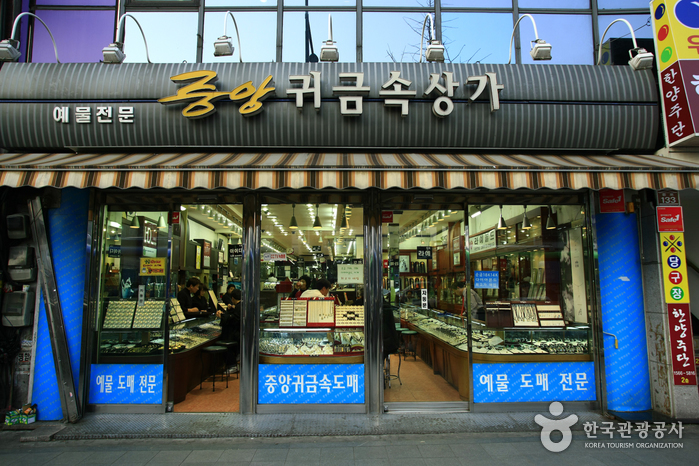

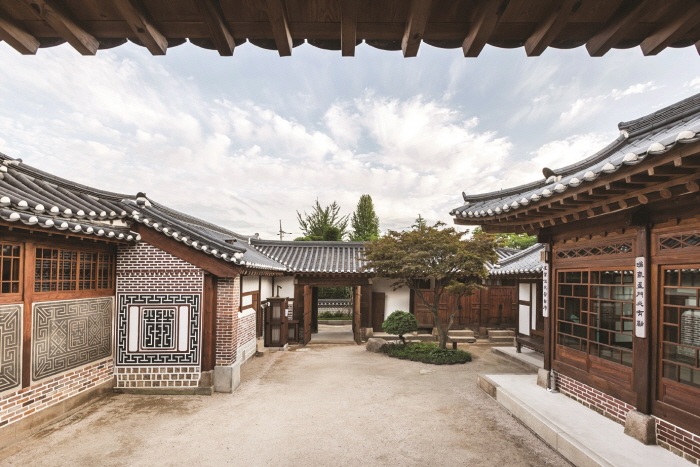
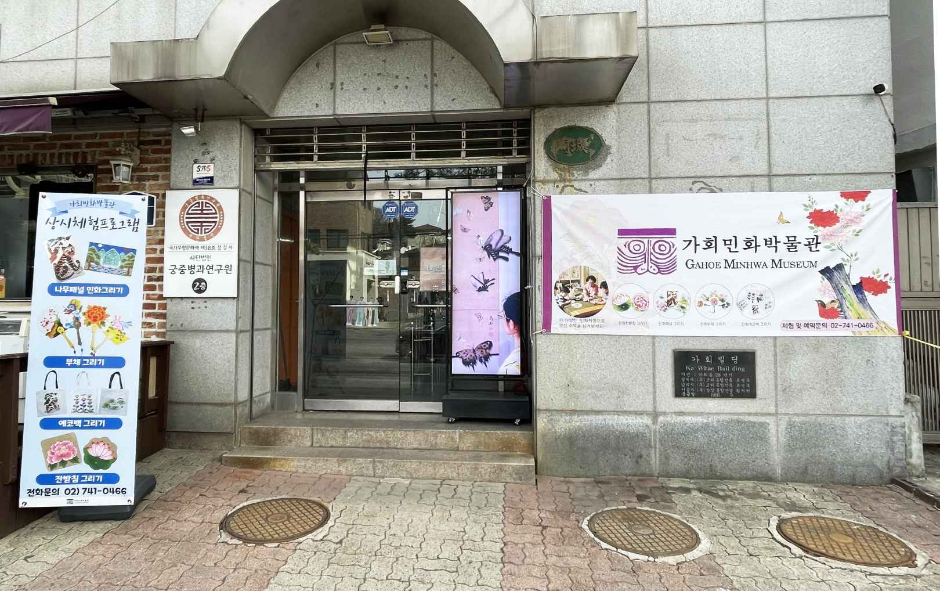
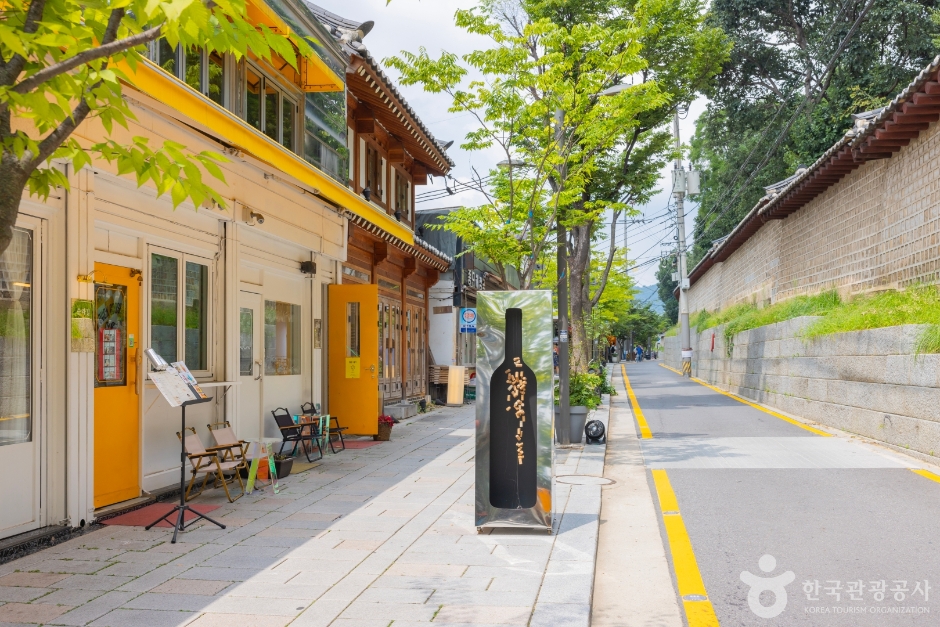
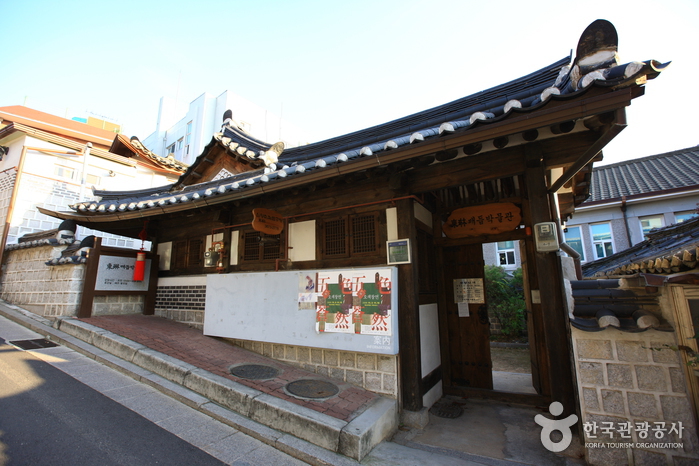
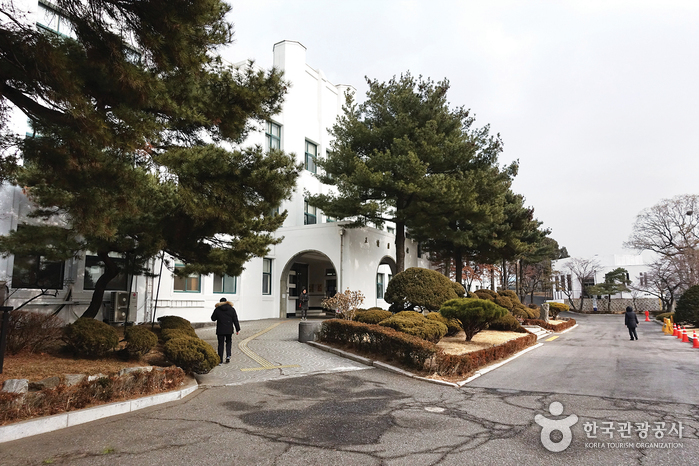
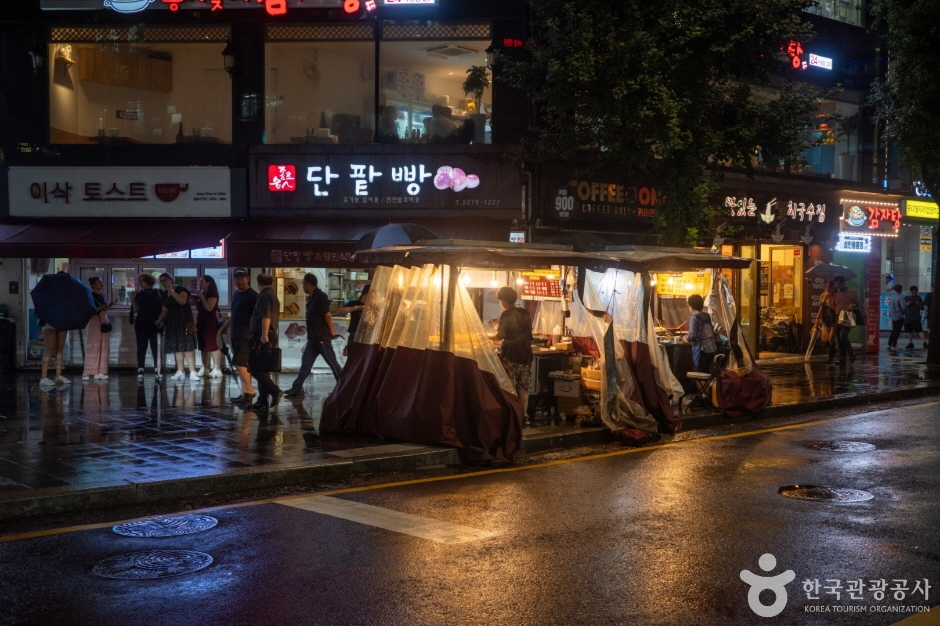
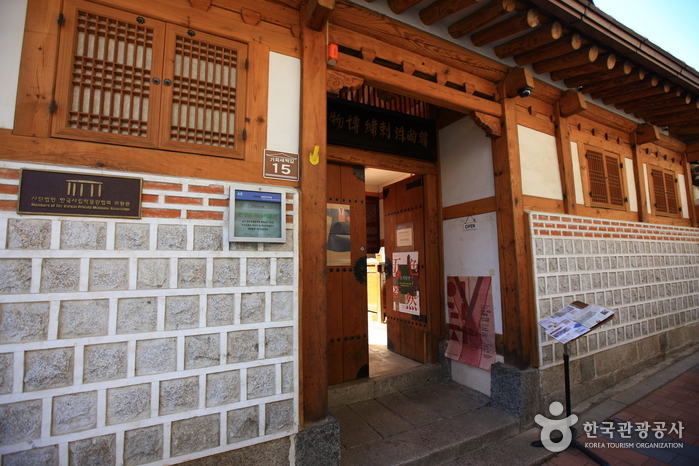
 Français
Français
 한국어
한국어 English
English 日本語
日本語 中文(简体)
中文(简体) Deutsch
Deutsch Español
Español Русский
Русский